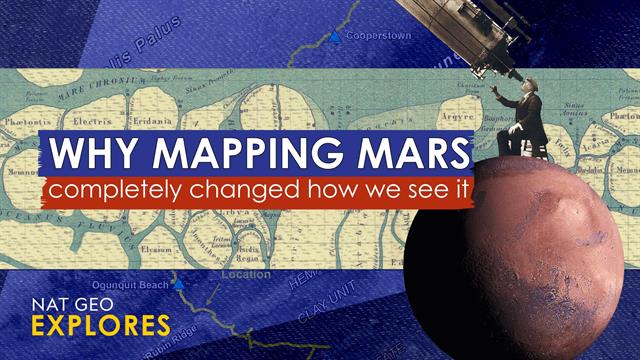Breaking News
Popular News





Enter your email address below and subscribe to our newsletter
by dustkey

The quest to map Mars is as intriguing as the red planet itself, marked by a fascinating rivalry between an artist enamored with the cosmos and a bold professional astronomer. Their competition not only charted the Martian surface but also ignited decades of scientific exploration and imaginative speculation.
In the late 19th and early 20th centuries, the exploration of Mars was largely driven by optical observations through Earth-based telescopes. At the forefront of this effort was Percival Lowell, an American businessman turned astronomer. Lowell was captivated by the possibility of intelligent life on Mars, a passion fueled in part by the popular and speculative theories of Italian astronomer Giovanni Schiaparelli, who claimed to see ‘canali’ or channels on the Martian surface. Although Schiaparelli meant ‘channels,’ his term was mistakenly translated as ‘canals,’ suggesting the work of intelligent beings.
Lowell’s contributions included the establishment of the Lowell Observatory in Flagstaff, Arizona, in 1894. From this vantage point, he embarked on mapping the Martian surface, insisting that he observed a complex network of canals, which he believed were evidence of a technologically advanced civilization struggling to survive on a drying world. Although his ideas were popular and inspired works of science fiction by authors such as H.G. Wells, they were met with skepticism by the scientific community due to lack of empirical evidence.
In stark contrast stood the artist-turned-astronomer, Camille Flammarion, who nurtured a more philosophical approach to the study of Mars. Focused less on the strict empirical observations that marked Lowell’s work, Flammarion embraced a broader vision that combined scientific observation with speculative thought, publishing several books that explored the possibility of life on other planets. Flammarion, although open to the idea of life, was more cautious in his interpretations of the Martian markings.
This scientific duel spurred an ongoing interest and debate within the astronomical community, leading to a more refined understanding of Mars as new technology, such as spacecraft and rovers, became available. Modern missions, including NASA’s Perseverance Rover, have since shown that what Lowell perceived as canals were optical illusions, created possibly by dust storms and atmospheric conditions, yet they have also confirmed water-ice deposits and signs of past water flows, critical in the ongoing search for ancient microbial life.
Today, this early rivalry and the mysteries it uncovered serve as a reminder of both the power and the pitfalls of scientific exploration. Their contributions, while sometimes flawed, laid the groundwork for the intricate understanding of Mars we are developing in the present day. As we continue to send missions to Mars, the legacy of these pioneering map-makers encourages both wonder and critical inquiry, embodying the interdisciplinary pursuit that stretches from imagination to solid scientific ground.